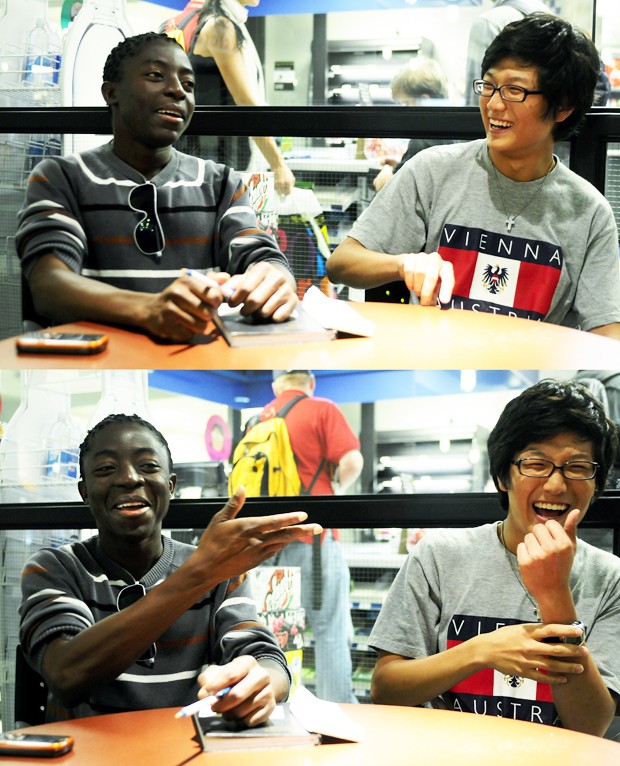With 66,099 students, 27.8 million square feet, and more than 370 degree programs, the University of Minnesota can seem enormous. For the estimated 4,077 international students attending the University, the alienation of being a student can feel magnified by the size ofâĦwell, everything. International students have found the chance for a second âÄúfamilyâÄù through the International Buddy Program, IBP, formerly the International Friendship Group Program . What was a small gathering of around 60 to 80 students last year has now evolved into an more than 300-person community of new and existing international students from more than 33 different countries, all partnering up to explore the University while building friendships. By listening to student feedback, IBP program coordinators Beth Isensee and Grace Machoki redefined the existing international student group this fall. While the International Friendship Group Program functioned primarily as a large group of new international students with a few current student leaders, IBP is a more intimate, one-to-one mentorship between existing students and first-year international âÄúbuddies.âÄù âÄúWe wanted to focus on creating a lasting relationship to better meet the student needs of both new and current students,âÄù Isensee said. âÄúWhat we were hearing from student leaders and participants was that their needs were different [than we had thought].âÄù The new IBP focuses on achieving three goals: independence and interdependence, self-awareness and appreciation of differences. To prepare for the program changes, IBP held two trainings for assistants and buddy mentors. âÄúThe trainings were to make [the mentors] aware of differences in communication styles, viewpoints and different approaches through simulation activities,âÄù Michoki said. âÄúThey had to learn to look at themselves with descriptors âĦ as more than just names, to see students beyond nationalities.âÄù So far, the changes have been met with widespread approval from both leaders and student members, as reflected by the dramatic rise in attendance and enthusiasm. âÄúThere used to be two leaders with a big group, and it was hard to talk with each other,âÄù statistics senior Sukai Qin , event planner and member of IBP, said. The program now, she said, is much more âÄúengaging and personal.âÄù Nutrition science senior Julius Musenze , who hangs out every day with his new international buddy, first-year food science student Jae Park , agreed. âÄúWith one-to-one, you can really get to know someone well,âÄù Musenze said. âÄúI wouldnâÄôt hang out as much with people in a big group.âÄù Along with the logistical changes, IBP is working to plan more involved buddy programs to keep up with the growing numbers. Isensee and Machoki believe monthly activities, such as a volunteer experience with a youth AIDS camp and a Thanksgiving dinner, will help raise cultural awareness and promote acceptance. âÄúThe base of what we are trying to âĦ teach is to value differences,âÄù Isensee said. Anyone who sees Musenze and Park can tell that the new program is achieving its goal of appreciating differences through lasting relationships. âÄúHeâÄôs rubbing off on me,âÄù Musenze said laughing. âÄúWe go shopping and eat out a lot, and now I love Korean hip-hop.âÄù âÄú[Because of IBP], I was a lot less nervous about being in college in the states,âÄù Park said. âÄúI was nervous about getting friends âĦ but I got a friend.âÄù

Image by Chelsey Rosetter
University nutrition science senior Julius Musenze, right, chats with food science first year Jae Park outside Coffman Memorial Union on Wednesday.
International students find community on campus
International Buddy program provides new international students a chance to ease transitions and find friendship.
Published September 9, 2009
0

